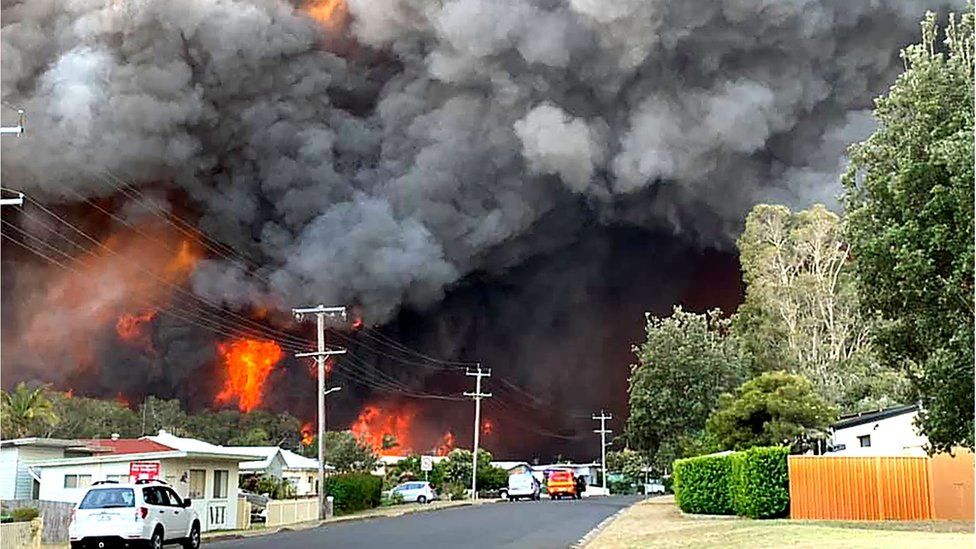Protecting Your Home: The Critical Duty of a BAL Report in Bushfire Preparedness
Protecting Your Home: The Critical Duty of a BAL Report in Bushfire Preparedness
Blog Article
Just How BAL Report Impacts Shrub Fire Security Measures
In the realm of bush fire security, the Building Attack Level (BAL) record stands as a vital device that considerably influences the security and durability of properties in fire-prone locations - BAL Report. The impact of a BAL assessment extends far beyond simple documentation; it serves as the foundation for determining the appropriate building requirements and fire defense actions needed to alleviate the risks presented by bushfires. As areas grapple with increasingly extreme fire seasons, comprehending just how the BAL record shapes these safety actions comes to be critical for property owners, policymakers, and builders alike
Comprehending the Bushfire Assault Degree

Importance of BAL Report Evaluation
Additionally, the BAL record evaluation works as a foundational step in adhering to lawful obligations and demands connected to bushfire defense. Local councils and authorities frequently mandate the entry of a BAL report as part of the planning and structure authorization procedure to guarantee that residential properties are effectively safeguarded versus bushfire threats. Failing to conduct a detailed BAL report assessment can result in insufficient defense measures, leaving properties vulnerable to ravaging bushfire cases.
Building And Construction Standards Based on BAL
A thorough understanding of the Bushfire Strike Level (BAL) enables residential property owners to execute building requirements tailored to their particular risk profile. Construction requirements based on BAL are essential in reducing the impact of bushfires on properties. The BAL ranking classifies the potential danger a residential property encounters during a bushfire on a range from BAL-Low to BAL-FZ (Flame Zone)
Carrying Out Fire Security Measures
With the foundation of building requirements based additional reading upon Bushfire Strike Level (BAL) in position, the focus currently shifts towards the practical implementation of fire protection actions to strengthen residential properties versus bushfire risks. Carrying out fire security measures entails a mix of passive and energetic methods to improve the durability of structures in bushfire-prone locations. Easy steps consist of utilizing fire-resistant building materials, mounting cinder guards on vents, securing spaces in wall surfaces and roofings, and maintaining a clear space around the property without flammable plant life. Active actions include having firefighting tools readily available, such as tubes and water pumps, along with creating a defendable area around the building by getting rid of vegetation and having a well-maintained yard. In addition, developing an evacuation plan and guaranteeing all citizens know emergency situation treatments are vital elements of efficient fire defense procedures. By incorporating both passive and energetic techniques, homes can significantly reduce their susceptability to bushfire cases and boost the safety and security of owners.
Safeguarding Homes Against Bushfires
Efficiently safeguarding homes versus the devastating effects of bushfires needs a aggressive and detailed method to fire protection steps. Property owners staying in bushfire-prone areas should prioritize the implementation of various approaches to improve their property's strength against wildfires. One basic aspect is developing a defensible space around the home by keeping a clear area free of combustible materials. This includes routinely cutting plants, removing dead plants, and making certain a safe distance in between structures and trees. Setting up fireproof roofing materials can likewise significantly lower the risk of cinder strikes and straight fire contact. Furthermore, securing spaces and vents to avoid ember intrusion, in addition to including fire-resistant windows and doors, can help fortify the home's defense versus bushfires. Buying a reliable water source, such as a well-kept lawn sprinkler or a devoted water container, is critical for supplying water during fire emergencies - BAL Report. By embracing a positive position and integrating these protective measures, property owners can dramatically increase their possibilities of guarding their homes versus bushfires.
Final Thought
Finally, the Bushfire Strike Degree (BAL) report plays a vital function in figuring out the needed protection actions against bushfires. By evaluating the BAL, building and construction criteria can be tailored to minimize the threats and guarantee the safety of homes in fire-prone areas. Executing fire defense actions based on the BAL report is necessary in securing residential or view it commercial properties from possible bushfire dangers. It is crucial for property owners to prioritize BAL evaluations and abide by suggested building and construction standards to enhance bushfire strength.
In analyzing bushfire risk to residential or commercial properties, comprehending the Bushfire Strike Level (BAL) is a critical element for applying effective security actions. In general, a clear understanding of the Bushfire Strike Level is crucial for executing ample protection steps and alleviating the influence of bushfires on properties.

Report this page